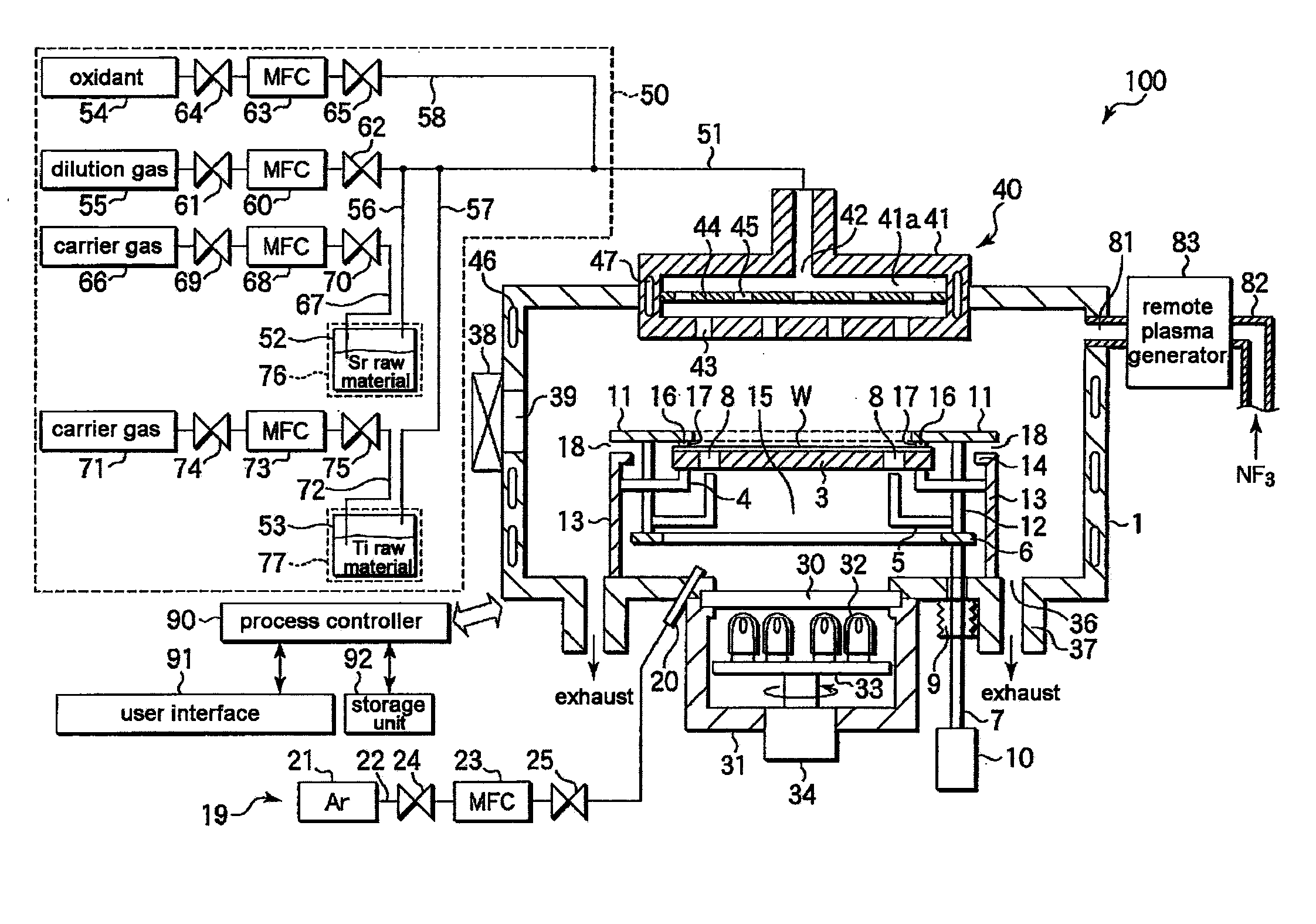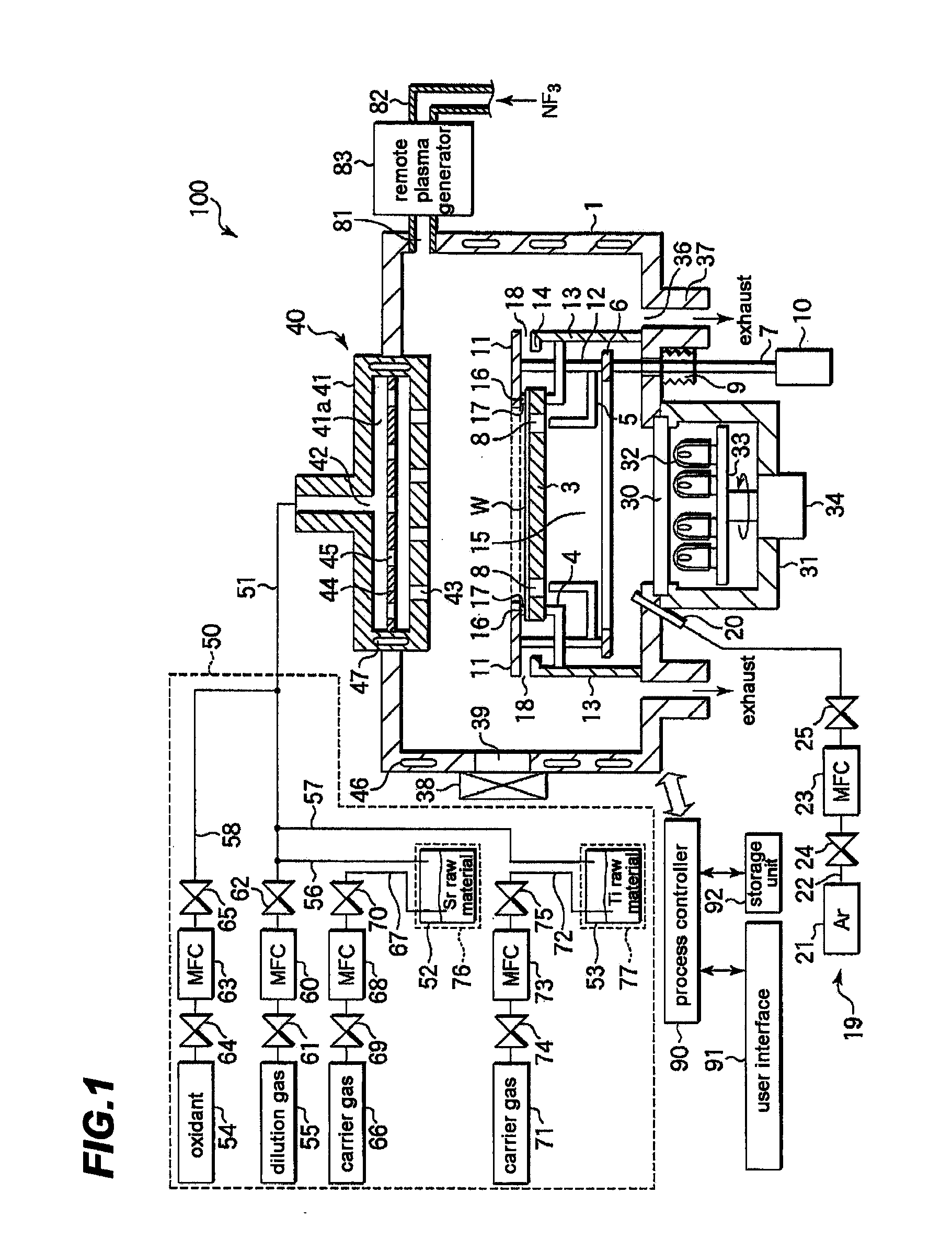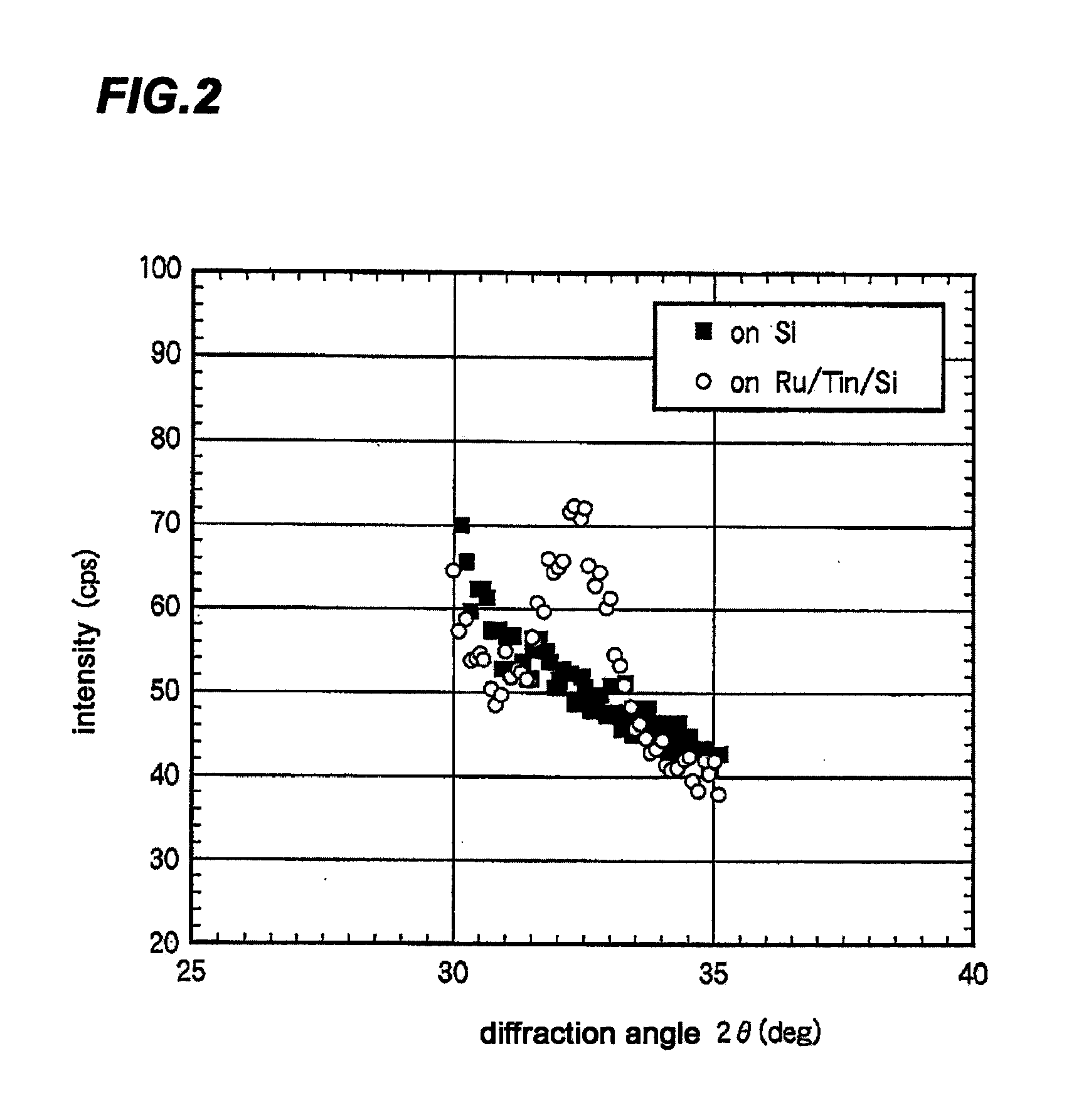METHOD FOR Sr-Ti-O-BASED FILM FORMATION AND STORAGE MEDIUM
- Summary
- Abstract
- Description
- Claims
- Application Information
AI Technical Summary
Benefits of technology
Problems solved by technology
Method used
Image
Examples
first exemplary embodiment
[0055]In the first exemplary embodiment, at first, gate valve 38 is opened and a semiconductor wafer W is taken into processing chamber 1 through loading / unloading hole 39 and is loaded on loading table 3. Loading table 3 has been heated by heat rays which were previously emitted from heating lamps 32 and transmitted from transmission window 30. Semiconductor wafer W is heated by the heat of loading table 3. Then, dilution gas source 55 supplies dilution gas, such as Ar gas, at a flow rate of 100 to 800 mL / sec(sccm). Meanwhile, the inside of processing chamber 1 is exhausted by a vacuum pump (not shown) via exhaust hole 36 and exhaust pipe 37, thereby forming a pressure of approximately 39 to 665 Pa within processing chamber 1. Herein, the heating temperature of semiconductor wafer W is set to be within a range of 200 to 400° C.
[0056]Then, the film formation is actually started by controlling the flow rate of the dilution gas, such as Ar gas, to be in a range of 100 to 500 mL / sec(sc...
second exemplary embodiment
[0085]In the same manner as the first exemplary embodiment, in the second exemplary embodiment, gate valve 38 is opened first, and a semiconductor wafer W is taken from loading / unloading hole 39 into processing chamber 1 and is loaded on loading table 3. Since loading table 3 has been previously heated by heating lamps 32, semiconductor wafer W is heated up to a predetermined temperature, for example, 200 to 400° C. Then, dilution gas, such as Ar gas, is supplied from dilution gas source 55 at a flow rate of 100 to 800 mL / sec (sccm). Meanwhile, the inside of processing chamber 1 is exhausted by a vacuum pump (not shown) via exhaust hole 36 and exhaust pipe 37, thereby vacuum-exhausting processing chamber 1 so that the pressure within processing chamber 1 is approximately 6 to 665 Pa. Then, the film formation is actually started by controlling the flow rate of the dilution gas, such as Ar gas, to be in a range of 100 to 500 mL / sec (sccm) and controlling the pressure within processing...
third exemplary embodiment
[0104]In the same manner as the first exemplary embodiment, in the third exemplary embodiment, gate valve 38 is opened first, and a semiconductor wafer W is taken from loading / unloading hole 39 into processing chamber 1 and is loaded on loading table 3. Since loading table 3 has been previously heated by heating lamps 32, semiconductor wafer W is heated up to a predetermined temperature, for example, 200 to 400° C. Then, dilution gas, such as Ar gas, from dilution gas source 55 is supplied at a flow rate of 100 to 800 mL / sec (sccm). Meanwhile, the inside of processing chamber 1 is exhausted by a vacuum pump (not shown) via exhaust hole 36 and exhaust pipe 37, thereby vacuum-exhausting processing chamber 1 so that the pressure within processing chamber 1 is approximately 39 to 665 Pa. Then, the film formation is actually started by controlling the flow rate of the dilution gas, such as Ar gas, to be in a range of 100 to 500 mL / sec (sccm) and controlling the pressure within processing...
PUM
| Property | Measurement | Unit |
|---|---|---|
| Fraction | aaaaa | aaaaa |
| Fraction | aaaaa | aaaaa |
| Ratio | aaaaa | aaaaa |
Abstract
Description
Claims
Application Information
 Login to View More
Login to View More - R&D
- Intellectual Property
- Life Sciences
- Materials
- Tech Scout
- Unparalleled Data Quality
- Higher Quality Content
- 60% Fewer Hallucinations
Browse by: Latest US Patents, China's latest patents, Technical Efficacy Thesaurus, Application Domain, Technology Topic, Popular Technical Reports.
© 2025 PatSnap. All rights reserved.Legal|Privacy policy|Modern Slavery Act Transparency Statement|Sitemap|About US| Contact US: help@patsnap.com



